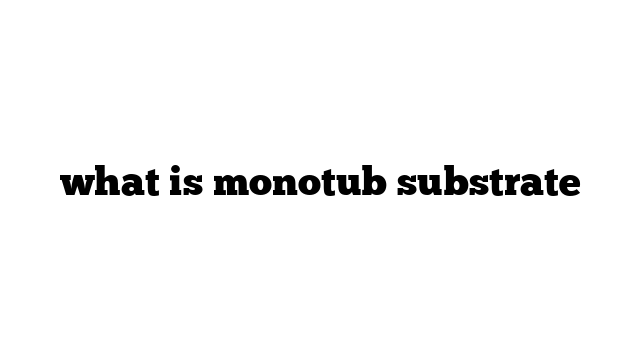Monotub substrate is a specific type of growing medium used in the cultivation of mushrooms. It is a bulk substrate that provides the necessary nutrients and environment for mushroom mycelium to grow and produce fruit bodies. Monotub cultivation is popular among home growers and hobbyists due to its simplicity and effectiveness.
The term “monotub” refers to the container in which the substrate is placed. It is typically a plastic tub or bin that serves as the growing chamber for the mushrooms. Monotubs are often used in conjunction with the “dubtub” method, which involves creating a double tub system to maintain a controlled and humid environment for the mushrooms to thrive.
The substrate used in monotubs can vary depending on the type of mushroom being cultivated. Common substrates used in monotub cultivation include coir (coconut fiber), vermiculte, peat moss, and various organic materials such as straw, sawdust, or wood chips. These materials are chosen for their ability to retain moisture and provide a nutrient-rich environment for the mycelium to colonize.
Coir is a popular substrate choice for monotubs due to its high moisture retention and low risk of contamination. It is derived from the husk of coconuts and is widely available in the market. Coir is typically hydrated and mixed with other ingredients such as vermiculite or gypsum to create a balanced and nutrient-rich substrate.
Vermiculite is another commonly used substrate component in monotubs. It is a natural mineral that has excellent water retention properties. When combined with coir, vermiculite helps create a fluffy and well-draining substrate that promotes healthy mycelial growth.
Peat moss is often used in combination with coir and vermiculite to create a nutrient-rich substrate for mushrooms. It is an organic material derived from decomposed sphagnum moss and is known for its ability to hold water and provide aeration to the substrate.
In addition to these components, some growers also incorporate organic additives such as gypsum, coffee grounds, or crushed oyster shell into their substrate mix. These additives can help adjust the pH level of the substrate and provide additional nutrients for the mycelium.
Preparing the substrate for a monotub involves several steps. First, the materials are hydrated and mixed together to create a well-balanced substrate mix. The mixture is then pasteurized or sterilized to eliminate any potential contaminants and allow the mycelium to colonize without competition.
Once the substrate is prepared, it is filled into the monotub container and layered evenly. The mycelium is then introduced to the substrate by adding spawn, which is the inoculated material that contains the mushroom mycelium. The spawn is evenly spread over the substrate surface, and then covered with another layer of substrate to protect it and provide a favorable environment for growth.
The monotub is then sealed and placed in a suitable environment for colonization. During this colonization phase, the mycelium will grow and spread throughout the substrate, consuming the nutrients and breaking it down. This process typically takes several weeks, depending on the type of mushroom and environmental conditions.
Once the substrate is fully colonized, the monotub is moved to a fruiting environment to encourage the development of fruit bodies. This involves exposing the substrate to light, adjusting temperature and humidity levels, and providing proper air exchange. With the right conditions, mushrooms will start to grow from the surface of the substrate, and the grower can harvest them when they reach their desired size.
It is important to note that successful monotub cultivation requires attention to detail and adherence to proper sterilization and hygiene practices. Contamination can quickly ruin a batch of mushrooms, so growers must take precautions to prevent unwanted organisms from taking over the substrate.
In conclusion, monotub substrate is a key component in mushroom cultivation that provides the necessary nutrients and environment for mushrooms to grow. Popular substrates for monotubs include coir, vermiculte, and peat moss, which are mixed together and pasteurized or sterilized to create a balanced and sterile medium. Monotub cultivation is a popular method among mushroom growers due to its simplicity and effectiveness in producing high yields of mushrooms.
